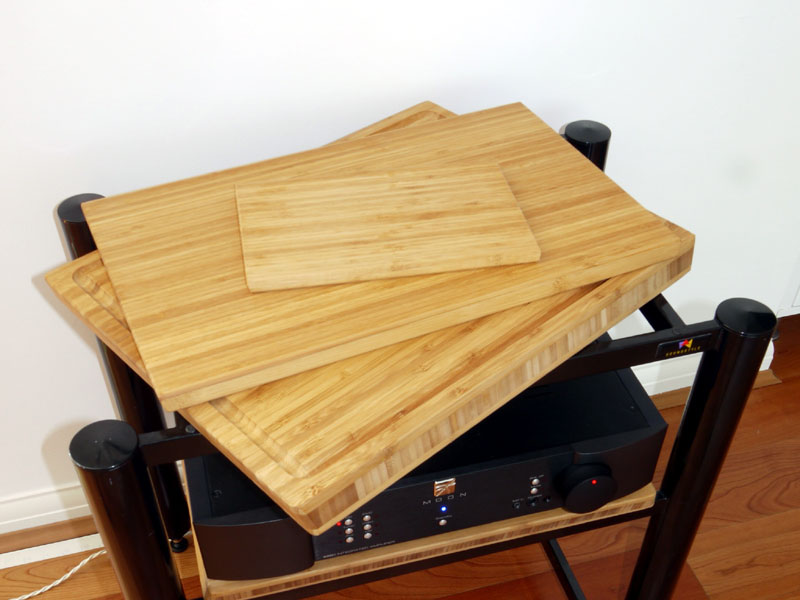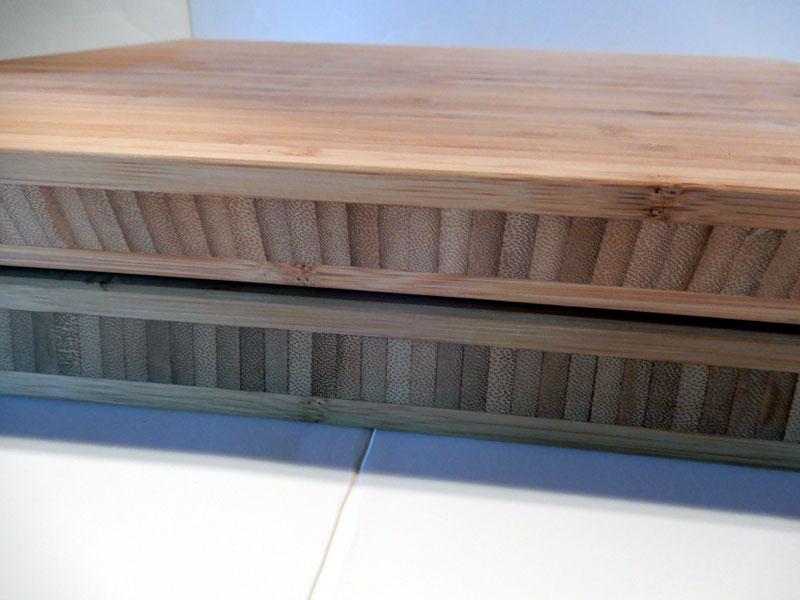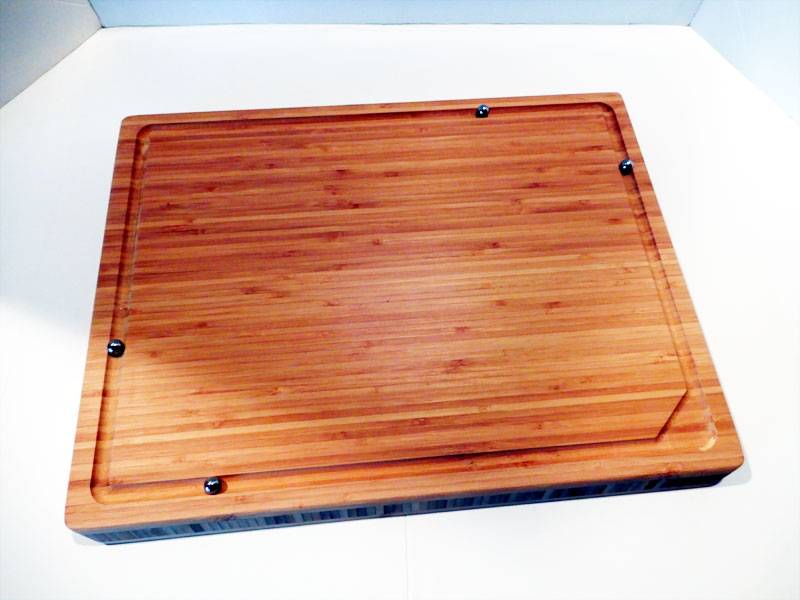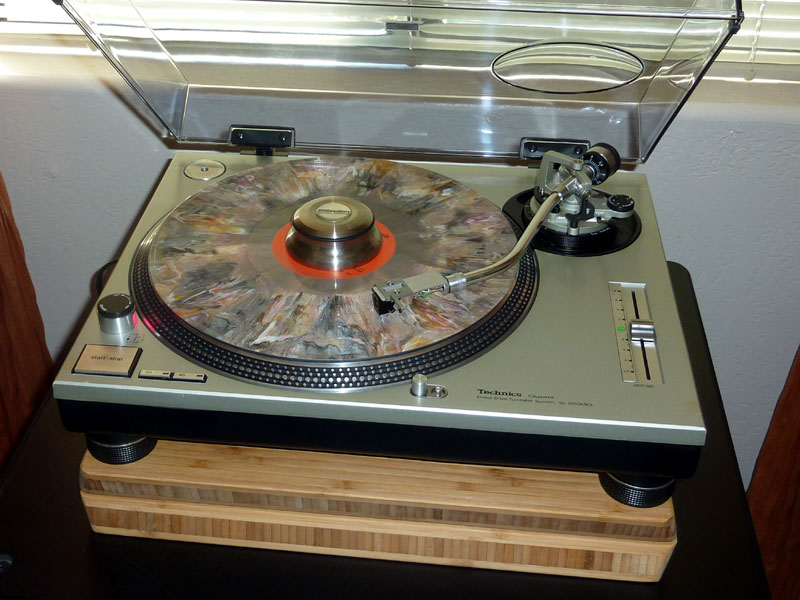Variation on a Theme: A DIY IKEA Aptitlig Isolation Platform
ike so many TAB readers, I read Roy Gregory's blog on the IKEA Aptitlig chopping boards with keen interest. For those who missed the article, published in 2014, and are wondering why a sound-and-music website would cover kitchen accessories, let me summarize. Roy focused on the "board" part of the Aptitlig, which comes in three sizes, and ignored the "chopping" aspect. Each Aptitlig features a matrix of bamboo that's effective at addressing vibration and resonance in audio electronics. There are three Aptitlig sizes -- 9 1/2"L x 6"W x 1/2"T, 17 3/4"L x 11"W x 3/4"T, and 17 3/4"L x 14 1/4"W x 1 1/4"T -- with the largest being of particular interest because it can accommodate larger components, including turntables. Prices? If you're asking, you can afford them: $4.99, $9.99 and $19.99, respectively.
Even though I have a big Silent Running Audio rack that can hold up to eight products, I am constantly having to put amps and CD players on the floor in front of it. So each product doesn't have to sit on the carpet, and potentially overheat because of it, I have used all manner of shelves and platforms, but I'm always running short of them. So I purchased a few of the two largest Aptitligs, as they were the perfect size for so many products. You can't see easily from the picture above, but the largest of the three chopping boards has a shallow rounded channel routered into one side. The channel is there to catch liquid -- these are chopping boards, after all. But seeing that channel started me thinking: two chopping boards, with the channels facing each other and ball bearings in between, might make an inexpensive equipment platform.
Off to eBay I flew, measurements indicating that 7/16" ball bearings would fit perfectly in the channel. A week later the bearings arrived and I put everything together -- a 30-second process. It worked like a charm. The two chopping boards fit perfectly together, yet there was enough space between them, 1/8" or so, to allow some wiggle room, making a heavy, attractive and effective isolation platform -- one with a semi-floating top plate and six (!) alternating layers of bamboo. How much would that cost from an audiophile manufacturer? From IKEA and eBay, it was less than $50.
And it got better. Depending on where I positioned the ball bearings, I could have a floating top that was mostly fixed in place (with four bearings near two corners, as shown above), that swiveled (with three bearings, one in the middle of three sides), or that moved forward and back (with four bearings, two each on opposite sides near the front and rear). This had great utility, depending on what I decided to put on top of the platform.
A turntable like the Technics SL-1200 Mk II, which just fit, should be fixed in place; a Pioneer Elite DV-79AVi universal player used as a source for headphone listening was easier to access with a swiveling platform; and my CEC TL 1 CD transport, with its top-loading mechanism, fit perfectly on the platform, and forward/backward movement meant that I could put the whole thing on a tight rack shelf and still load CDs without having to bend like a contortionist. (One bit of caution about this final use, however: be sure the range of motion isn't so great as to cause whatever is on the platform to tip and fall off when the top Aptitlig is pulled forward or pushed back. You've been warned.) As for a discussion of the sonic effect of the Aptitlig itself, I'll direct you to Roy's article. But I will point out one particular benefit with the Aptitlig/ball-bearing sandwich under a turntable: greater isolation from footsteps and feedback from speakers. The turntable in my office, which is in the only part of my house without a concrete slab underneath, has been a casualty of walking too purposefully nearby. That's no longer an issue with the Aptitlig platform (actually, two of them, given the size of the turntable) underneath. In addition to hardened-steel ball bearings, eBay often has Delrin and ceramic spheres, as well as brass bearings, for sale, all at 7/16" diameter. I've not used any of these others, because the steel ball bearings work so well, but if some enterprising reader does a listening test of all available options, please let me know what you hear, so I can share with others. There you have it -- a cheap, effective,
"open-source" isolation platform that also allows for multiple configurations
and even tweaking. If you come up with variations of your own, please send me the details,
so I can share them with the TAB readership. |




